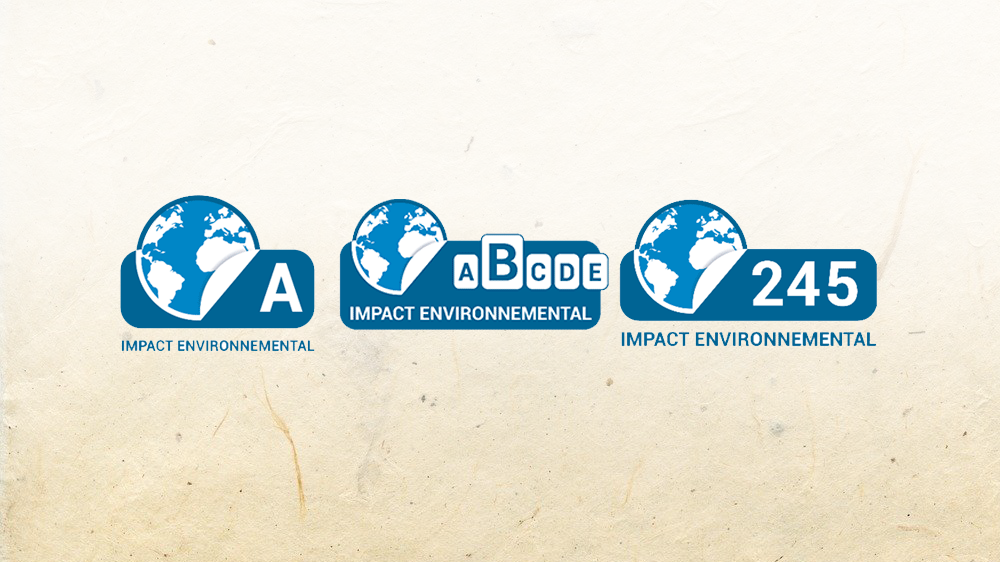This text is an article from a French law. To be applied, it will still require several implementation decrees, but the text has been voted. This law amended the French “Environmental Code”.
What is The French Climate and Resilience Law?
The French Climate and Resilience Law was passed in 2021, after the Citizen’s Convention on Climate. This text covers a very wide range of topics related to sustainability but here we are going to focus on the topic of environmental labelling for products.
This idea was first introduced in an article of the French Anti-Waste for Circular Economy Law (AGEC Law in France), but this article was replaced by the 2nd Article of the Climate and Resilience Law. This specific article makes environmental labelling mandatory for several categories of products (including apparel and footwear).
Who is impacted?
Every company selling clothing textile or footwear products on the French market.
Key Dates to Remember
-
The law was passed in 2021, after the Citizen’s Convention on Climate.
-
The labelling is supposed to be mandatory by January 2023 for fashion products. However, as the methodology is not agreed on yet, some expect that the entry into force might be delayed.
Requirements
the Environmental Label:
The label has to be visible and accessible for the consumer, especially at the moment of purchase.
The information displayed must:
-
Consider the environmental and social impact of the product over its entire life cycle.
-
Show the environmental impacts in terms of greenhouse gas emissions, damage on biodiversity, water and other natural resources.
-
Take into account the environmental externalities of the manufacturing systems of the products.
-
The impact in terms of greenhouse gas emissions evaluated over its entire life cycle (in an easily understandable manner for consumers).
 IMAGE: SHOWING THE ALTERNATIVES FOR ENVIRONMENTAL LABELLING UNDER THE FRENCH CLIMATE AND RESILIENCE LAW. SOURCED FROM ALTERMAKER.
IMAGE: SHOWING THE ALTERNATIVES FOR ENVIRONMENTAL LABELLING UNDER THE FRENCH CLIMATE AND RESILIENCE LAW. SOURCED FROM ALTERMAKER.Data availability
For some categories of goods and services (still TBD at the time of writing), when a reason of general interest justifies it, the companies will have to provide the data behind the calculation of the environmental score in an open-source format that can freely be used by an automated processing system.
Implementation SPECIFIC TO CLOTHING AND FOOTWEAR
Methodologies
The different methodologies which are being tested for clothing textile and footwear:
-
ADEME Technical Basis, developed by the ADEME in collaboration with the French Ministry of Ecological Transition.
-
PEF (Product Environmental Footprint), developed by the EU. We explain PEF here.
-
Methods issued from the Xtex call for proposals: The ADEME launched this call for proposals (closed in November 2021) for the clothing and footwear sector. Anyone can propose a method, given that it fulfils several requirements. French public authorities have until the end of January 2022 to select the best methods and start the Experimentation phase.
For the environmental labelling to become mandatory, the methodology must be selected, and an implementation decree has to be redacted to provide all the detailed requirements to footwear and apparel manufacturers. Today, several experts predict that PEF will be the chosen methodology used to align the EU.
Consequences
Any failure to comply with the requirements detailed above is punishable by an administrative fine. The use or publication of a labelling that does not comply with those requirements is forbidden and punishable.
Risk Mitigation
To ensure compliance with the French Climate and Resilience Act, it’s recommend that firms start to design and implement an effective system ahead of January 2023 to get an understanding of their product-related environmental impact in time.
Even though traceability will not be the only source of data for that footprint, it is certainly a necessary step to make a trustworthy assessment. Implementing traceability provides brands with a valuable head start to stay ahead of the curve. Proactive brands will be able to act quickly when the specific methodology requirements will be published.
How TrusTrace can help?
TrusTrace Traceability allows brands to map and identify the suppliers involved in the manufacturing of a product. Implementing this solution creates preferred channels between brands and their suppliers to gather various sets of data that can be aggregated on the platform. Furthermore, Certified Material Compliance enables brands to gather even more granular data about the materials used in their products, setting the stage up for open communication about product traceability towards regulators and consumers.
Speak to a TrusTrace expert today to explore how TrusTrace can provide smarter and faster traceability for your brands.
Please note: At TrusTrace, we want to keep you informed on laws and regulations, but this information should not be considered or used as legal advice.
Last updated on June 4th, 2024. The "Timeline" was removed because it is outdated, and the image of labels was updated.
